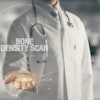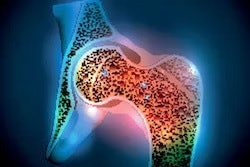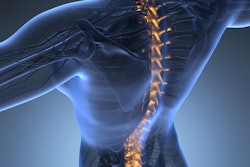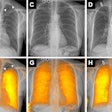Bone mineral density (BMD) is only slightly below the normal average among transgender youth undergoing gender-affirming hormone therapy, according to a study by researchers at the University of Colorado in Aurora.
A team of pediatricians analyzed results from dual energy x-ray absorptiometry (DEXA) scans in a group of transgender youth who participated in a trial at Children's Hospital Colorado between 2016 and 2018 to evaluate insulin sensitivity and body composition. The finding may be reassuring for youths undergoing gender-affirming care, noted lead author and medical student Micaela Roy.
“Total body BMD Z-scores ascertained by [DEXA] were slightly below average for female and male norms, but still in the normal range, including for those who were on GnRHa monotherapy and normal for those on [gender-affirming hormone therapy],” the group reported. The study was published in the May issue of the Journal of the Endocrine Society.
Some transgender youth are treated with gonadotropin-releasing hormone agonists (GnRHa) followed by testosterone or estradiol, with studies suggesting these treatments may impact BMD, the authors explained. However, there are limited studies examining the effect of GnRHa treatment duration on BMD, or whether there are differences between individuals who did or did not receive GnRHa treatment before starting gender-affirming hormone therapy (GAHT), they noted.
To address current gaps in knowledge, the researchers performed an analysis to assess BMD in a cross-sectional study of transgender youth undergoing different GAHT and/or GnRHa treatment regimens. The group culled data on 56 youths (aged 10.4-19.8 years old) and measured BMD Z-scores on DEXA scans and associations between GnRHa duration, body mass index (BMI), and BMD.
Participants on GnRHa alone (n = 19, five assigned female at birth [AFAB], 14 assigned male at birth [AMAB]) at the time of the DEXA scan were on average 13.8 years old, had been on GnRHa for on average 10 months prior, and began GnRHa treatment at an average age of 12 years old. The median total body BMD Z-score for the five AFAB transgender patients was 0.3 compared with male norms and -0.1 compared with female norms. The mean BMD Z-score for the 14 AMAB individuals on GnRHa alone was -0.7 compared with male norms and -0.9 compared with female norms.
AFAB participants (n = 21, 5 with past GnRHa) on testosterone were on average 16.7 years old, had been on testosterone for an average of 11 months, and started testosterone at an average age of 16 years old. The median BMD Z-score for AFAB individuals was -0.2 compared with male norms, and 0.4 compared with female norms, while the five patients on testosterone with prior GnRHa had significantly lower BMD Z-scores using female norms than those on testosterone alone (-0.3 vs. 0.7), the researchers reported.
AMAB participants (n = 16, 6 with current or past GnRHa) were an average age of 16.2 years old, had been on estradiol for an average of 11 months before study enrollment, and started estradiol at the age of 16 on average. The mean BMD Z-score for these individuals was -0.4 compared with male norms and -0.2 compared with female norms. There were no significant differences in BMD Z-scores for individuals assigned male at birth on estradiol plus GnRHa, the authors noted.
“It is reassuring that the individuals in this study on testosterone or estradiol had normal BMD, although many did not have prior GnRHa treatment, and were later in puberty,” the group wrote.
Ultimately, this was a small, cross-sectional study with no baseline data prior to participants starting GnRHa or GAHT, and thus was limited, the authors noted.
Future studies using quantitative CT to evaluate bone microarchitecture and strength, as well as evaluating bone marrow composition and markers of bone turnover, may provide additional insights, they suggested.
“More research is needed to determine the optimal length of GnRHa therapy and/or timing of GAHT initiation with testosterone or estradiol and to better counsel patients and families with regard to bone health outcomes,” the group concluded.
The full study can be found here.



















